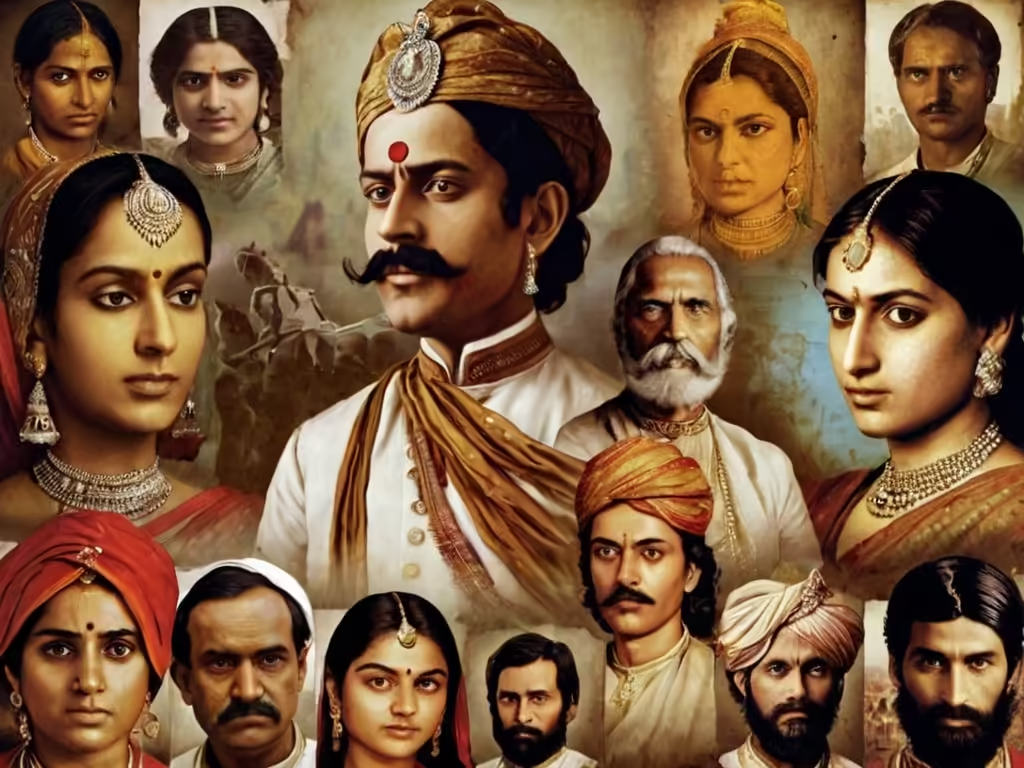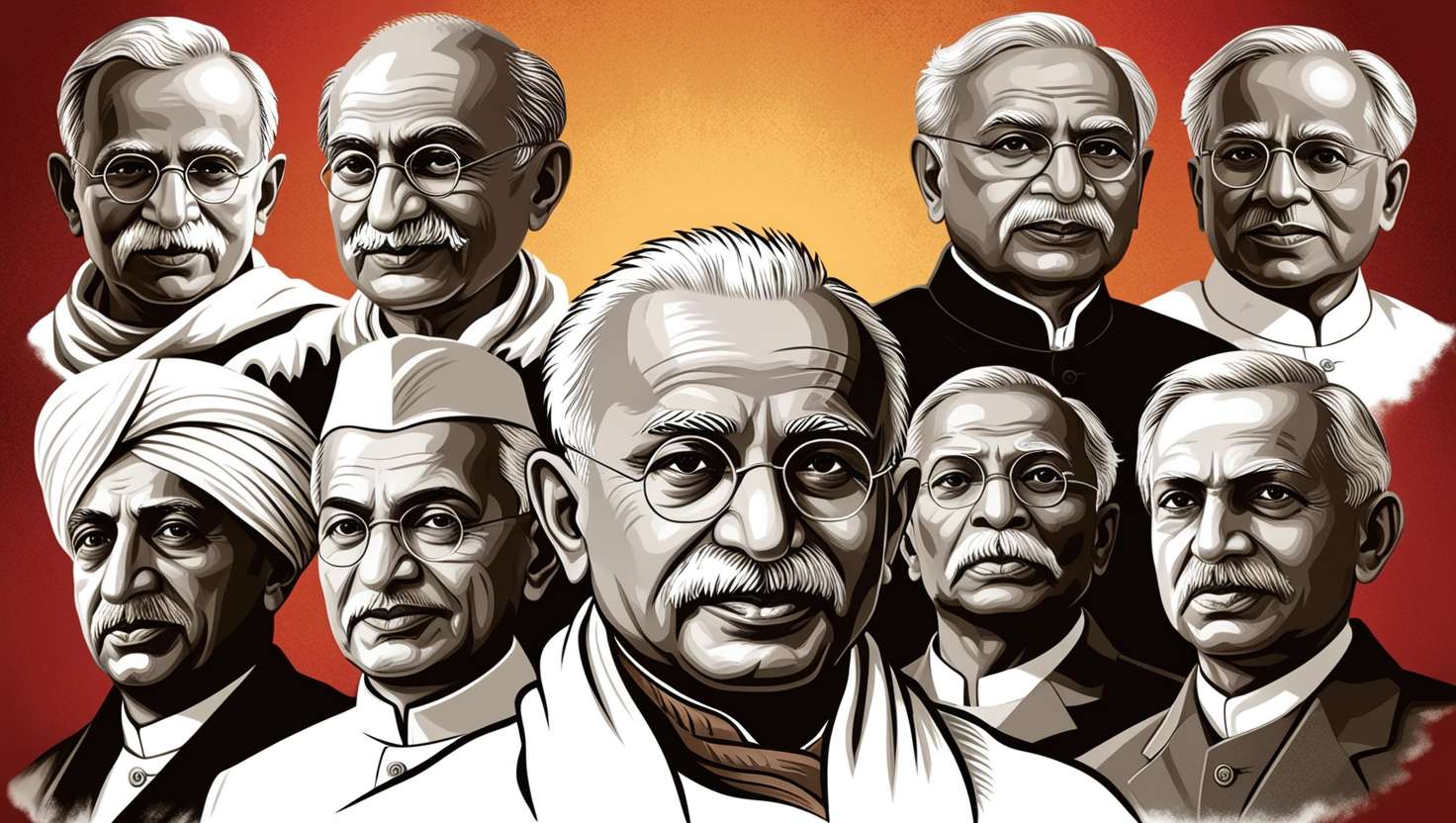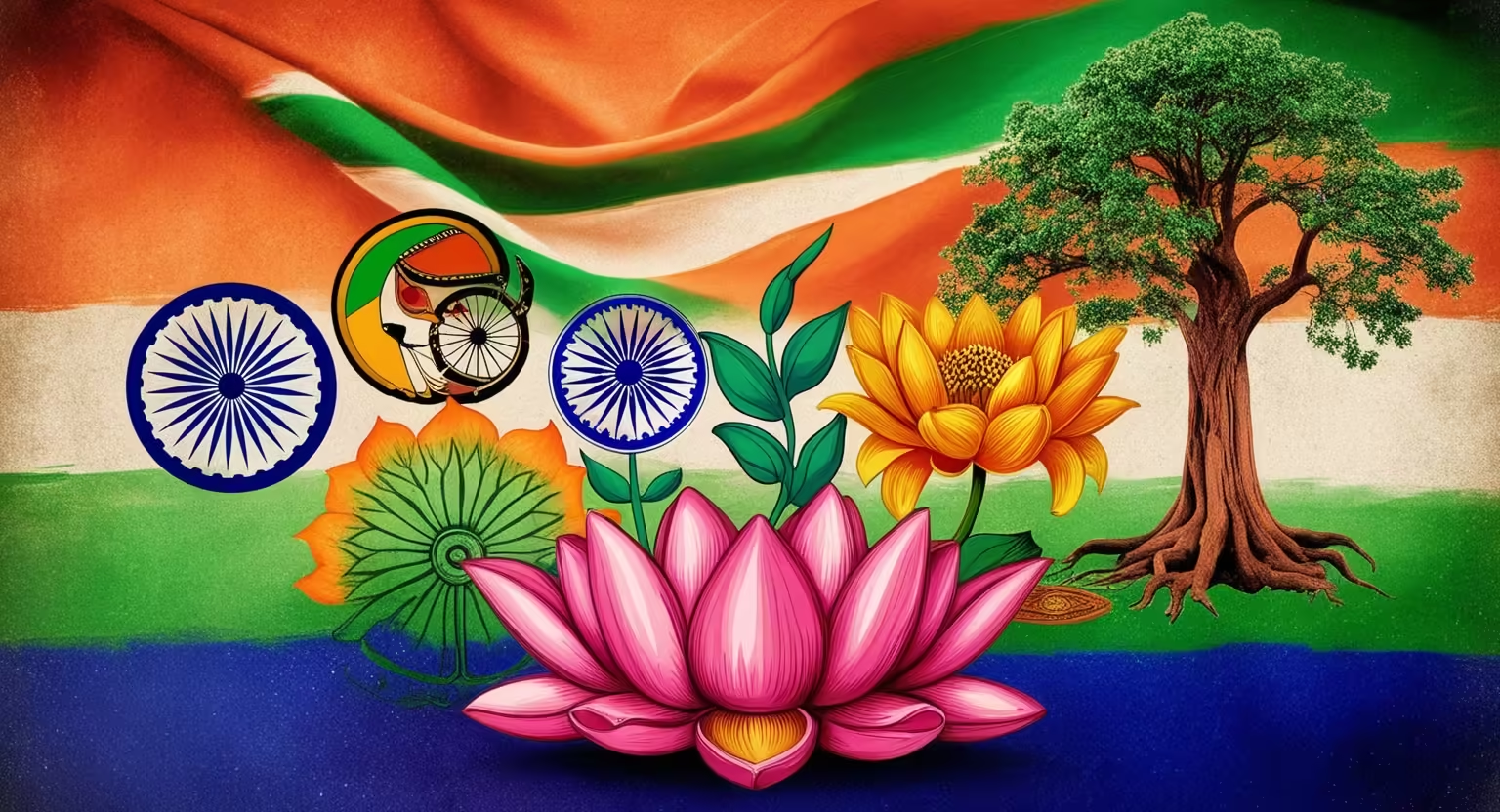Table of Contents
ToggleIntroduction
Back in 1857, there was a big uprising against the British rule in India, known as the First War of Independence or the Indian Mutiny, also referred to as the Indian Insurrection. This event is really important because it kicked off India’s long fight to become free from British control. The whole thing started because people were fed up with how harshly the East India Company was treating them and how Indian soldiers (sepoys) didn’t like being bossed around by their British officers.
On May 10th of that year, things boiled over in Meerut, a military town when some Indian sepoys wouldn’t use new rifle cartridges they heard were coated with animal fat something totally against their religion. From there, this rebellion spread fast to places like Delhi, Jhansi, Kanpur and Lucknow. During this tough time leaders stepped up among Indians who got both fighters and regular folks together to stand up against British rule.
Key Highlights
- In 1857, there was a big uprising against the British in India, known as the First War of Independence or simply the Indian Rebellion. This event played a huge part in India’s fight to get rid of British control.
- With reasons ranging from not liking how the East India Company ran things to Indian soldiers (sepoys) feeling mistreated by their British superiors, this rebellion had many sparks that set it off.
- Leaders were key in bringing together both soldiers and regular folks who wanted freedom from Britain. They helped ignite and guide this massive push for independence.
- By kicking off what would become a long battle for freedom, this rebellion changed how politics and society worked in India forever.
- Important people like Mangal Pandey, Rani Lakshmibai of Jhansi, Bahadur Shah Zafar II along with Nana Sahib Kunwar Singh Tantia Tope Begum Hazrat Mahal stood out during these times. Their bravery and leadership fueled hope among those fighting alongside them.
List of Important Leaders associated with the Revolt of 1857
| Leader | Role/Region | Notes |
|---|---|---|
| Mangal Pandey | Barrackpore, Bengal | Sparked the initial mutiny in 1857. |
| Rani Lakshmibai | Jhansi, Central India | Fought against British in Jhansi. |
| Nana Sahib | Kanpur, Uttar Pradesh | Led the rebellion in Kanpur. |
| Bahadur Shah II | Delhi | Symbolic leader of the revolt. |
| Tantia Tope | Central India | Military leader and strategist. |
| Kunwar Singh | Bihar | Led revolt in Bihar. |
| Begum Hazrat Mahal | Lucknow, Uttar Pradesh | Fought against British in Lucknow. |
| Maulvi Ahmadullah | Faizabad, Uttar Pradesh | Led the uprising in Awadh. |
| Khan Bahadur Khan | Bareilly, Uttar Pradesh | Fought against British in Bareilly. |
| Bakht Khan | Delhi | Commanded forces in Delhi. |
Key Figures in the Rebellion of 1857
During the Rebellion of 1857, a bunch of key leaders stepped up to challenge British rule. They really got Indian soldiers and regular folks together, fighting for their freedom. Among these important figures were Mangal Pandey, Rani Lakshmibai from Jhansi, Bahadur Shah Zafar, Nana Sahib, Kunwar Singh,Tantia Tope, Begum Haz Mahal, and other important leaders of the revolt. Each one brought something special to the table in this battle for independence and they’ve left behind stories that still fire people up today.
SEE MORE : Top Chamar Caste Surnames List
1. Mangal Pandey - The Spark of the Rebellion
Mangal Pandey was a soldier in the Bengal Native Infantry, which was part of the British East India Company. His actions on 10th May 1857, in what’s now Uttar Pradesh, really kicked things off for what would become known as India’s first war of independence.
He stood up to his British officers because he didn’t want to use bullets that were greased with animal fat a big no-no for him and many other Indian soldiers who had religious reasons to avoid such fats.
This bold move by Mangal Pandey wasn’t just about the cartridges; it symbolized a much bigger frustration with the British Raj and lit the fuse for a massive rebellion across North India. By taking this stand, he became an icon of resistance and set into motion events that marked a crucial turning point in Indian history.

2. Rani Lakshmibai of Jhansi - The Warrior Queen
Rani Lakshmibai, the Rani of Jhansi and a true Warrior Queen, stood tall during the 1857 Rebellion. With bravery in her heart, she led her soldiers into battle against British forces without a hint of fear.
Her fight against British rule wasn’t just about battles; it inspired countless others to rise up too. Known for her sharp military skills and never-give-up attitude, Rani Lakshmibai fought alongside Tatya Tope in Gwalior and carved out a place for herself in Indian history as an icon of resistance.
As she fought valiantly to protect her kingdom from the clutches of the East India Company, she became synonymous with courage and sacrifice among Indians who remember her as a symbol of their struggle for independence from British rule.
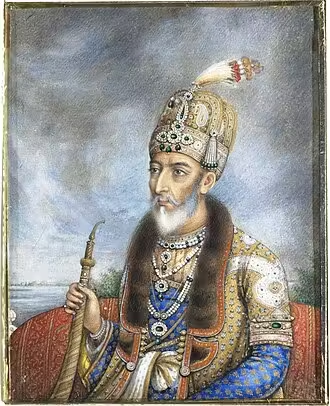
3. Bahadur Shah Zafar - The Last Mughal Emperor
Bahadur Shah Zafar, known as the last Mughal Emperor, really marked a turning point in Indian history. When the Rebellion of 1857 kicked off, he was at the heart of it all, with Indian soldiers gathering around him.
Even though he didn’t have much power himself, his role gave everyone fighting against British rule something to unite under. With Bahadur Shah’s involvement, there was this big shift where Indian rulers started to push back against British dominance more than before.
His part in all this, along with the leadership of General Bakht Khan, showed how strong people felt about standing up to the British Raj and has made him an unforgettable character when we talk about India’s fight for freedom.
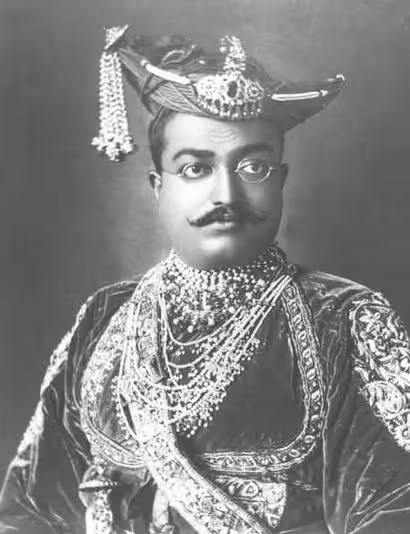
4. Nana Sahib - The Maratha Leader
Nana Sahib, also known as Nana Saheb, was a key player in the 1857 mutiny, standing out as an important Maratha leader who fiercely opposed British rule. Being the adopted son of Peshwa Baji Rao II, who had been sent away by the British East India Company, he found himself in a powerful spot to make big changes.
His leadership skills really shone during his fight against the company’s forces, especially at Cawnpore where he led a tough battle against British troops. Through his actions in this rebellion, Nana Sahib became a symbol for many Indian rulers unhappy with how things were under British control.
His efforts didn’t just aim to shake off their power but also inspired others fighting for India’s independence later on. In history books today, Nana Sahib is remembered as a brave warrior who wasn’t afraid to stand up for what he believed was right.

5. Kunwar Singh - The Rajput Chief
Kunwar Singh, a Rajput leader, was key in the 1857 Rebellion. He led the fight in Bihar against British rule, standing strong for India’s freedom. With his great fighting skills and smart planning, he became a tough enemy for the British forces to face. By bringing together soldiers from different places, Kunwar Singh showed how good of a leader he was and how united Indian soldiers were during this battle.
He kept on fighting against the British until he died, showing just how brave Indian rulers could be when it came to defending their land from outsiders trying to take over. His story is still told today because it reminds us of what local leaders did in helping India try to become independent.
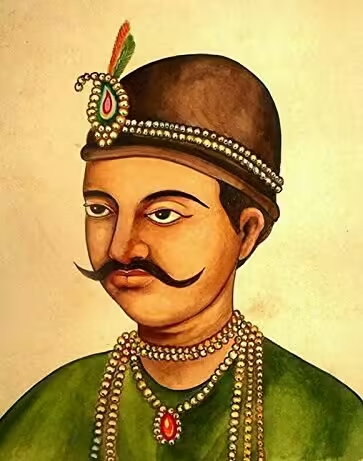
6. Tantia Tope - The Rebel General
Tantia Tope was a key figure in the 1857 mutiny, taking on the role of a rebel general. With his knack for military tactics, he led many successful fights against British rule. His skills in guerrilla warfare and rallying troops played an important role in keeping up the fight across central India.
He didn’t just fight; he inspired loads of people to join him because of his never-give-up attitude and smart strategies. Facing off with British forces, Tantia Tope caused them plenty of trouble and proved to be a tough opponent. Today, we remember him as a brave leader who stood tall against oppression, embodying courage and resistance during that time against British rule in central India.
7. Begum Hazrat Mahal - The Queen of Awadh
Begum Hazrat Mahal, known as the Queen of Awadh, was at the forefront during the 1857 Revolt against British rule. After her husband, Nawab Wajid Ali Shah, was forced into exile by the East India Company, she stepped up to lead their kingdom’s resistance in Lucknow.
With great bravery and leadership abilities, Hazrat Mahal inspired both men and women to stand up against the British forces. Her actions became a symbol of Indian women’s fierce determination to challenge oppressive foreign control during that era.
Today, Begum Hazrat Mahal is remembered as a heroic warrior queen in Indian history for her critical role in striving towards independence and her efforts to declare her son, Birjis Khadir, as the Nawab of Awadh.
The Global Impact of the Rebellion
The Rebellion of 1857 made a big splash, not just in India but around the world too. This uprising caught the eye of people everywhere, highlighting the fight for Indian independence. It showed how harsh British rule was on behalf of the British Crown and won over folks who felt for India’s struggle.
Over in Britain, this event made officials think twice about how they were running things and led to changes in managing India. On a bigger scale, what happened during this rebellion played a part in breaking down the British Empire and helped pave the way for countries to become independent.
Influence on British Colonial Policies
The 1857 Rebellion really shook things up for the British in India. After putting down the uprising, Queen Victoria made a big announcement in 1858. She promised that under British rule, they’d be nice to Indian traditions and religions. With this change, running India was taken out of the hands of the English East India Company and given to the British Crown, specifically through something called the India Office.
This whole situation also made them rethink how they picked soldiers and planned their military moves in India. Basically, what happened back then started making people think differently about how Britain was handling things in India and set off events leading towards fighting for Indian independence from colonial rule.
Changes in Military Recruitment and Strategy
After the Rebellion of 1857, the British Army in India made some big changes to how they picked and managed their soldiers. They started depending less on Indian soldiers, especially those from the Bengal Army because this uprising showed them they needed troops who were more reliable and could be controlled better.
To avoid any similar problems in the future, they brought in more British soldiers to important places, got better at collecting information, and kept a closer watch over who was running things. These adjustments helped make sure that no one would easily challenge their power again.
The Sociopolitical Landscape Post-Rebellion
In 1857, a big uprising shook up India and changed how people saw the British rule. Before this, many thought the British couldn’t be beaten, but after the rebellion, Indians started to feel more united and began to believe in fighting for their freedom together.
This event brought forward new leaders who were determined to keep pushing for independence.
It also showed everyone just how unfair the British were being towards Indians which made lots of folks demand changes in society and politics. Basically, this was a turning point that kicked off India’s long journey toward becoming free from colonial rule.
Reforms in Land Ownership and Taxation
The uprising had a lot to do with changes the British made, like who owns land and how taxes were done. These changes, including the Doctrine of Lapse, took away a lot of power and land from local big shots, called taluqdars, as well as from folks running their own small kingdoms in North India.
This made a bunch of important people really unhappy. On top of that, the way the British Raj collected money from everyone else just added more problems. People didn’t like losing their old rights and ways of life, which helped rally both Indian soldiers known as sepoys and regular folks to join in on fighting back against these policies.
The Shift in Power Dynamics
In 1857, there was a big uprising that really changed how things worked in India. Before this, the East India Company and British officials had it pretty easy because they got along with Indian rulers and local big shots to keep their power. But during this rebellion, people from different parts of Indian society came together against them.
This showed that a lot of Indians were unhappy and wanted to be free from foreign rule. After everything calmed down, the British Raj started up. This meant that now the British government itself was calling the shots directly instead of through the East India Company like before, marking the end of company rule in India.
The whole mess made it clear that the company wasn’t doing such a great job at controlling things, which led to Britain taking over more firmly than ever before. This shift in power dynamics had a significant impact on the future of India and its relationship with British rule.
Conclusion
Back in 1857, India saw a huge uprising that really shook things up. People like Mangal Pandey, Rani Lakshmibai, Bahadur Shah Zafar, Nana Sahib, Kunwar Singh, Tantia Tope and Begum Hazrat Mahal were at the forefront of this rebellion. Because of their actions and the overall revolt, the British had to rethink how they did things over there – from who they let into their army to how they managed land and taxes. After everything calmed down a bit, these changes even affected power dynamics in big ways not just in India but around the world too. It’s important we remember all those brave folks for what they did during such an important time.
FAQ's
In 1857, a big uprising against British rule happened, and it brought out some key figures who were central to the fight. Among them were Rani Lakshmi Bai from Jhansi, Mangal Pandey, Nana Sahib, and Bahadur Shah Zafar. With their courage and leadership skills at the forefront, they motivated plenty of others to stand up and join in on battling against the control held by Britain.
In 1857, a lot of different people from across India came together to stand up against British rule. They were really upset about a few things – like the British changing their way of life, being too controlling, and making them pay too much tax. This made both the regular folks and Indian soldiers pretty angry. Over in Bengal Presidency especially, loads of these soldiers decided they had enough and joined forces to fight back against the British troops.
The Rebellion of 1857 marked a crucial turning point in the journey towards Indian independence. It shed light on how oppressive British rule was and sparked further movements fighting for freedom. With this uprising, it became clear that coming together to resist British control was essential, setting the stage for India’s eventual path to independence.
The 1857 Rebellion brought about big changes right away in India. The British forces put down the uprising harshly, causing a lot of violence and many people died. After everything settled, the East India Company was no more, and instead, direct control by Britain started over India – this period is called the British Raj. What happened during that rebellion didn’t just matter then; it left a mark on Indian history and played a significant role in how Indians fought for their freedom later on.
Every year on May 10th, we remember the Rebellion of 1857. It’s a special day that marks when the revolt started. To honor the freedom fighters who were part of this uprising, different events and ceremonies take place. At monuments, museums, and heritage sites across India, people can learn about this important piece of Indian history and how it contributed to the country’s fight for independence.
During the Rebellion of 1857, women were at the forefront. Leaders such as Rani Lakshmibai from Jhansi and Begum Hazrat Mahal took an active role in leading their troops against British forces. Their bravery not only inspired countless others to join the Indian revolt but also highlighted the strength and determination of Indian women during those times. The efforts of these female warriors are remembered and honored for showing incredible courage and resilience in fighting for independence.
